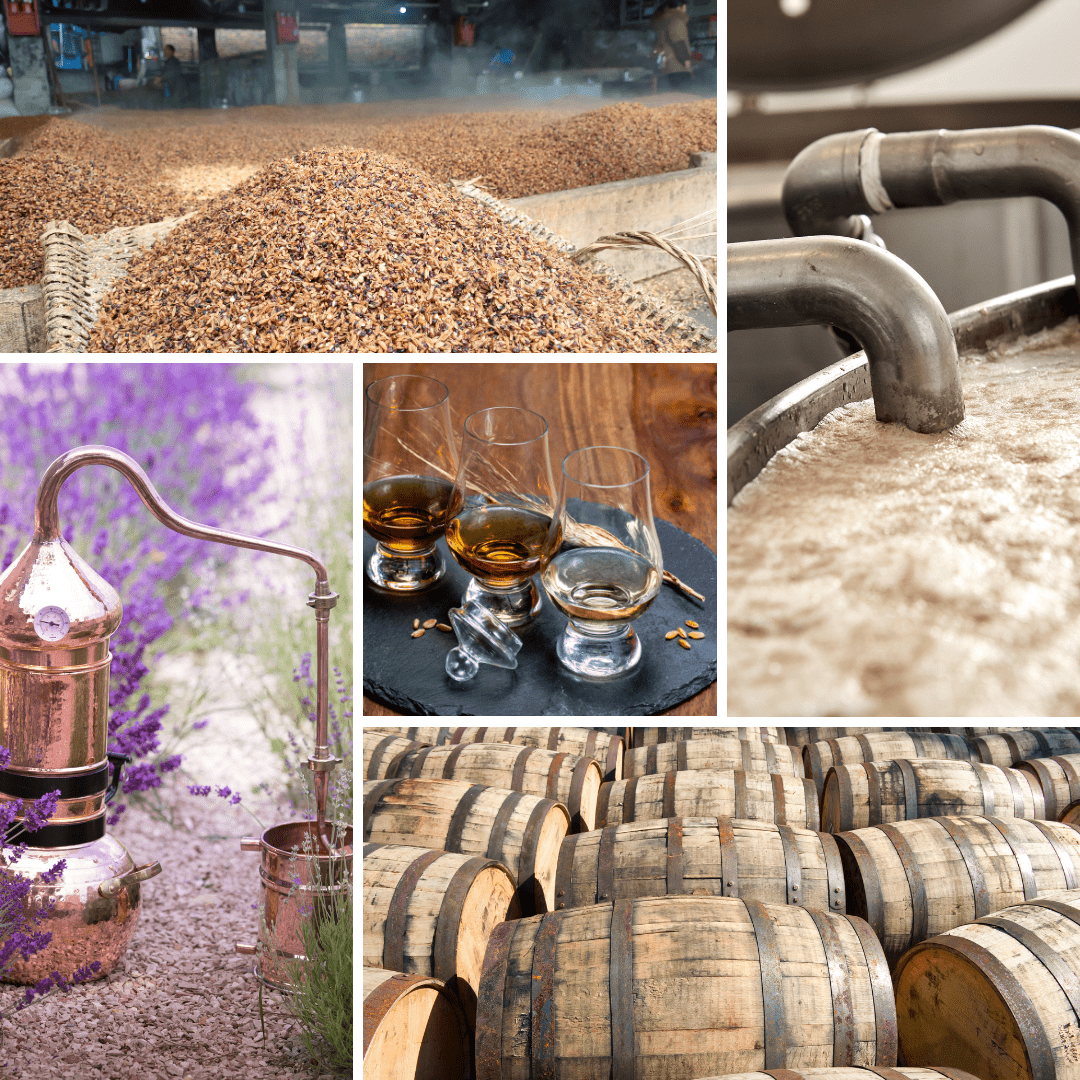What Is Distilling?
Distilling is a process used to separate alcohol from other substances in a liquid. The goal in whiskey-making is to extract the alcohol and concentrate the flavors that come from the grain mash, which is the mixture of grains used as the whiskey’s base. The magic of distilling lies in heating, separating, and condensing these substances into a rich, flavorful spirit.
Step 1: Mashing
Every bottle of whiskey starts with a “mash”, which is essentially a cooked mixture of water and grains. The specific grains used—like barley, corn, rye, or wheat—determine the whiskey’s flavor profile. The mash-making process includes:
- Mixing grains and water: Grains are ground into a coarse powder and mixed with warm water. This combination breaks down the starches in the grains.
- Converting starches to sugars: Enzymes in the grains convert the starches into fermentable sugars, creating a thick, sugary liquid called “mash.” These sugars are necessary because yeast needs them to produce alcohol in the next step.
Step 2: Fermentation—Where Alcohol Comes In
With a sugary mash ready, it’s time for fermentation. Here’s what happens in this step:
- Adding yeast: Yeast is added to the mash, which starts consuming the sugars. As yeast breaks down these sugars, it produces alcohol and releases carbon dioxide as a byproduct.
- Creating wash: After several days of fermentation, the mash turns into a liquid called wash” with around 6-10% alcohol. This wash is similar to a beer in taste but isn’t yet ready for drinking. To make it into whiskey, we need to separate the alcohol from the rest of the wash.
Step 3: Distillation—The Heart of Whiskey Making
Distillation is the main event. This step separates the alcohol from the rest of the wash by heating it in a still—a special container used for distillation.
- Heating the wash: The wash is poured into a still and heated. Since alcohol evaporates at a lower temperature (173°F/78°C) than water, it turns to vapor first while leaving water and heavier compounds behind.
- Capturing the vapor: The alcohol vapor rises through the still, and a condenser cools it down, turning it back into liquid form. This liquid is now called **distillate** and is much stronger in alcohol content—typically around 65-80%.
- The ‘Cuts’: Distillers make specific “cuts” during distillation to separate different parts of the alcohol. The “heads” (initial vapors) and “tails” (later vapors) are removed because they contain impurities or undesirable flavors. The “heart"—the middle part—is the purest, most flavorful portion and is what becomes whiskey.
Step 4: Maturation—Aging in Barrels
Once distillation is complete, the raw whiskey, known as **new make spirit**, isn’t ready to drink yet. To develop its flavor and smoothness, the spirit is aged in oak barrels. Here’s how aging works:
- Aging in oak barrels: Oak barrels are toasted or charred on the inside, which helps the spirit absorb flavors like vanilla, caramel, and spice. Over time, the whiskey interacts with the wood, gaining color and depth of flavor.
- Evaporation: As the spirit ages, some of it evaporates through the barrel’s wood. This is known as the “angel’s share.” This natural process intensifies the flavors of the remaining whiskey.
- Developing flavors: Over several years (typically between 3-12 years), the whiskey matures, developing complex flavors that make it smooth and enjoyable.
Final Step: Bottling—The Finished Product
After aging, the whiskey is filtered and bottled. Some distilleries may dilute it with water to reach a desired alcohol content before bottling, while others keep it at cask strength (higher alcohol content). Either way, the whiskey is now ready to be enjoyed.
Key Factors Affecting Whiskey’s Flavor
Here’s a quick look at what makes each whiskey unique:
Type of Grain: Corn, rye, barley, and wheat each add a distinct flavor.
Distillation Method: Single pot distillation creates a richer, heavier whiskey, while continuous distillation produces a lighter, smoother spirit.
Barrel Type and Char Level: Oak barrels give whiskey its color and many of its flavors. The level of charring inside the barrel also affects the flavor profile.
Aging Time: The longer whiskey ages, the smoother and more complex it becomes.
Conclusion: The Art and Science of Whiskey Distillation
Distilling whiskey is a combination of chemistry and craftsmanship, requiring precision and patience. From the mash to fermentation, distillation, aging, and bottling, each step in the process contributes to the whiskey’s final flavor. Next time you sip a glass of whiskey, take a moment to appreciate the science—and art—that went into crafting it.

